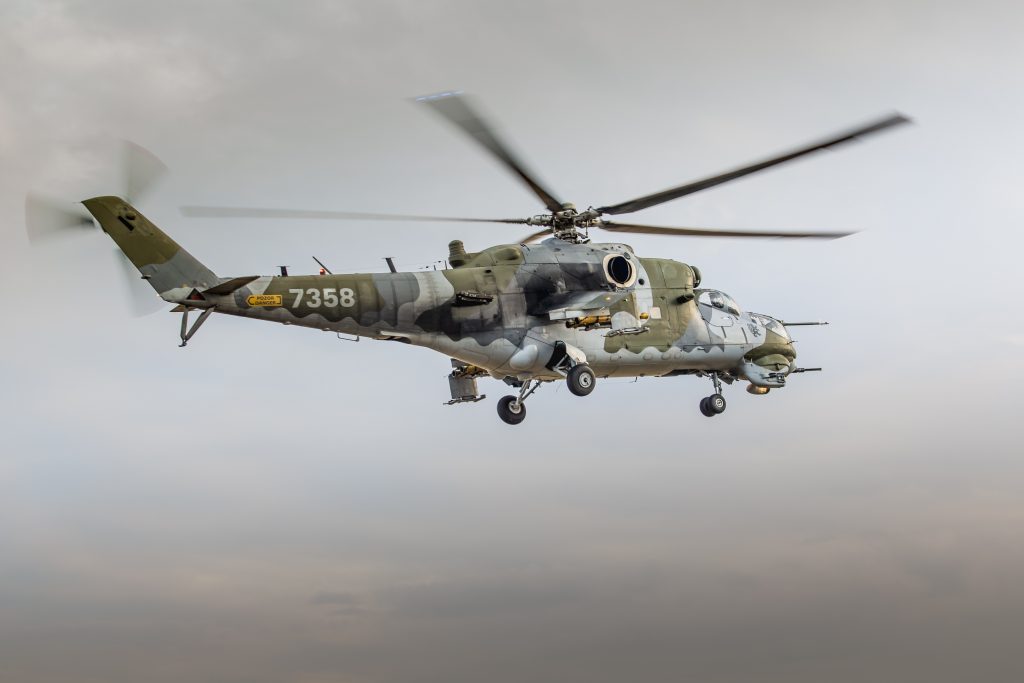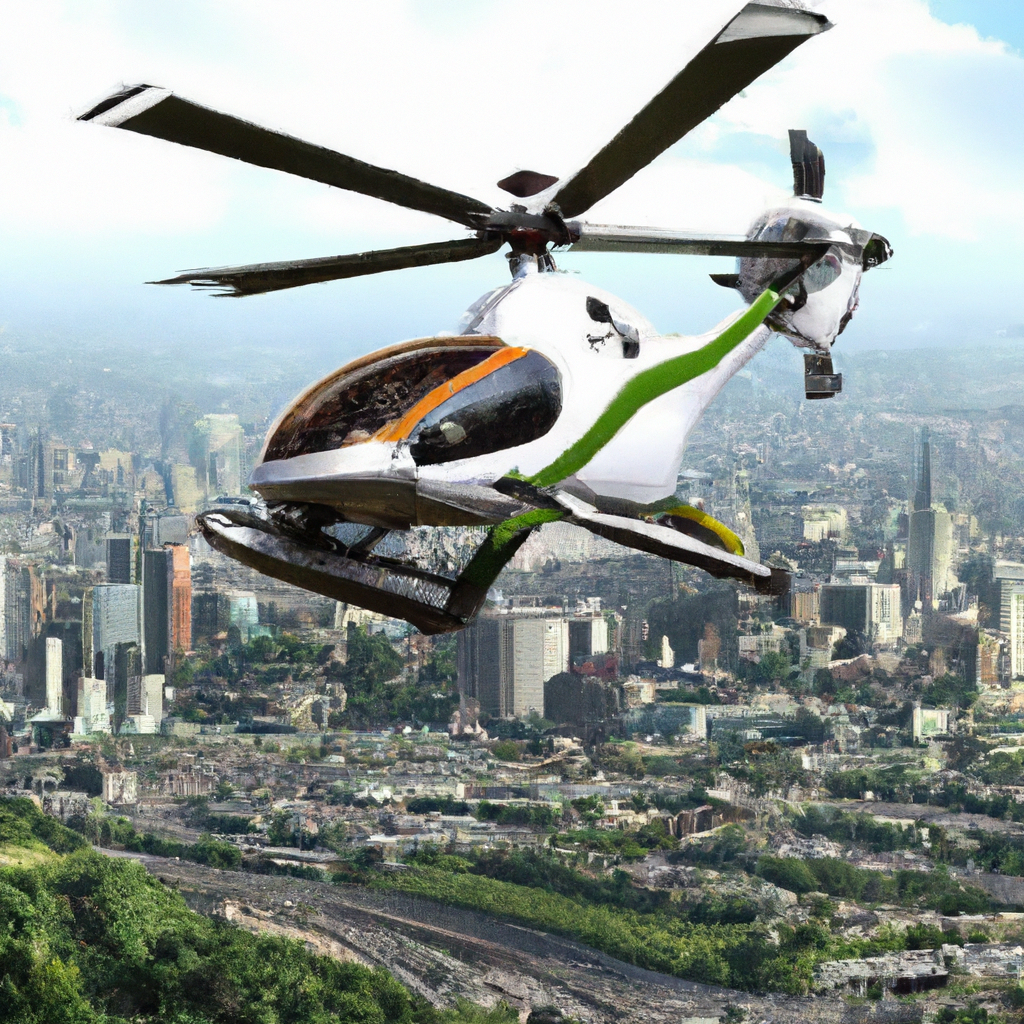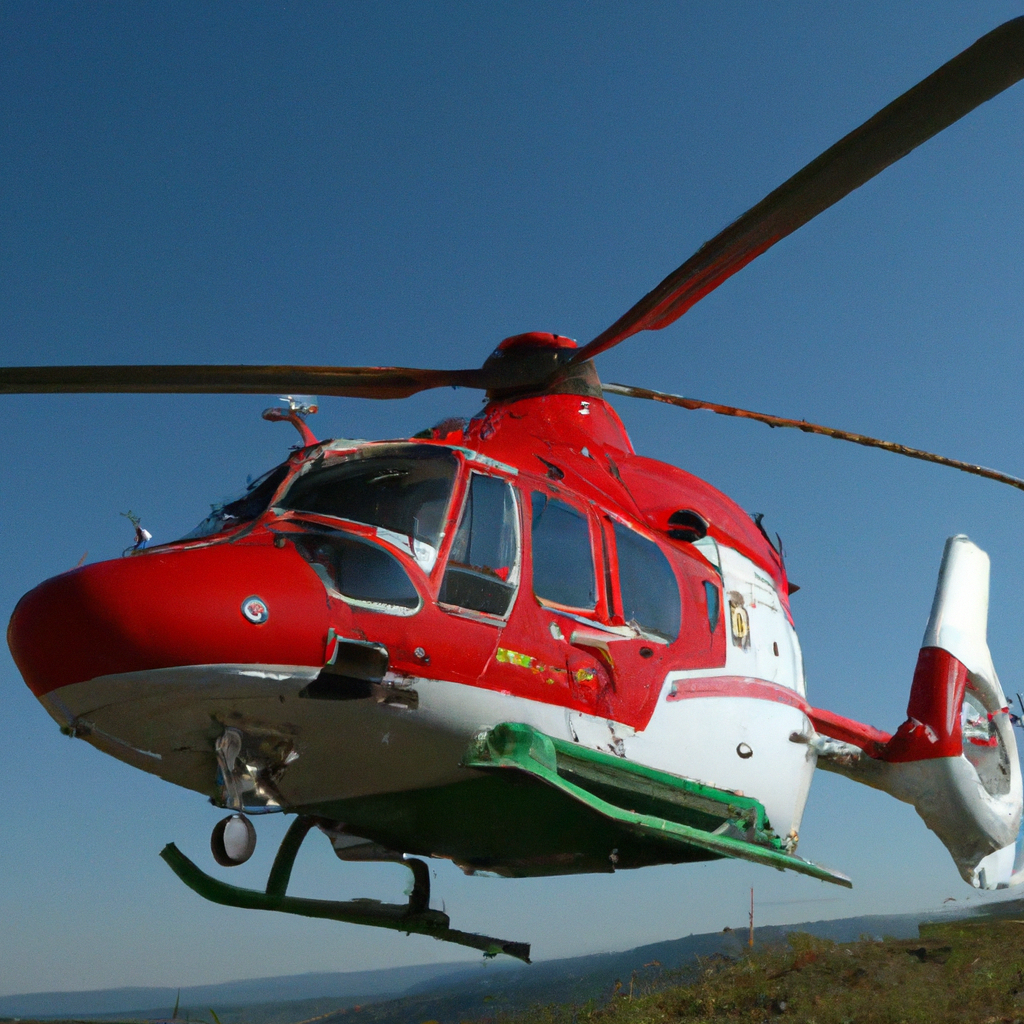Imagine a future where helicopters are no longer the sole mode of transportation for air ambulances. Instead, picture a world where electric-powered aircrafts, drones, or even flying cars zip through the sky to rescue and transport patients in need. This concept, known as Urban Air Mobility, is the future of air ambulance transport. It heralds a new era of faster response times, increased accessibility, and improved patient outcomes. In this article, we will explore the fascinating possibilities and potential advancements that await us in the realm of air ambulance services. So buckle up as we take off into the world of Urban Air Mobility.

The Evolution of Air Ambulance Transport
Helicopter transport as the traditional method
In the past, helicopter transport has been the traditional method of air ambulance transport. Helicopters have been used to quickly transport patients from the scene of an accident or a medical emergency to a hospital. The ability of helicopters to take off and land in small spaces and maneuver through congested urban areas made them an ideal choice for air ambulance transport.
The need for innovation in air ambulance transport
While helicopter transport has proven to be effective in many cases, there is a growing need for innovation in air ambulance transport. With the increasing population density in urban areas and the rise in traffic congestion, it has become more challenging for helicopters to navigate through the city and reach patients in a timely manner. This has led to the exploration of new methods of air ambulance transport, such as urban air mobility.
Introduction of urban air mobility
Urban air mobility is a concept that involves the use of advanced technology and innovative vehicles to revolutionize the way people and goods are transported in urban areas. It aims to provide faster and more efficient transportation options, and air ambulance transport is one area where urban air mobility can have a significant impact.
What is Urban Air Mobility?
Defining urban air mobility
Urban air mobility refers to the integration of air transportation services into the urban transportation system. It involves the use of electric vertical takeoff and landing (eVTOL) vehicles and autonomous flight technology to transport people and goods quickly and efficiently within urban areas. Urban air mobility is not limited to public transportation or commercial flights; it can also be applied to emergency medical services, including air ambulance transport.
Difference between urban air mobility and traditional air ambulance transport
The main difference between urban air mobility and traditional air ambulance transport lies in the technology and vehicles used. Traditional air ambulance transport relies on helicopters, which are limited by factors such as range, speed, and the need for designated landing areas. On the other hand, urban air mobility utilizes eVTOL vehicles, which are designed to take off and land vertically, making them more versatile and capable of operating in densely populated areas.
Benefits of Urban Air Mobility for Air Ambulance Transport
Faster response times
One of the key benefits of urban air mobility for air ambulance transport is the ability to significantly reduce response times. With eVTOL vehicles, air ambulance providers can swiftly navigate through urban areas and reach patients in need of medical attention much faster compared to traditional helicopters. This speed can make a critical difference in emergencies, where every minute counts and prompt medical care can save lives.
Reduced traffic congestion
Traffic congestion has become a major challenge in many urban areas, often hindering the timely arrival of emergency medical services. Urban air mobility offers a solution to this problem by bypassing traffic altogether. By utilizing the airspace to transport patients, air ambulance providers can avoid road congestion and efficiently reach their destinations, ensuring that patients receive prompt medical attention.
Accessibility to remote and urban areas
In addition to faster response times and reduced traffic congestion, urban air mobility also enhances accessibility to both remote and urban areas. Traditional air ambulance transport can be limited by geographical barriers, such as rough terrains or lack of suitable landing areas. With eVTOL vehicles, air ambulance providers can reach remote and secluded areas that would otherwise be difficult to access, ensuring that medical assistance reaches those in need, regardless of their location.
Challenges in Implementing Urban Air Mobility for Air Ambulance Transport
Regulatory hurdles
One of the key challenges in implementing urban air mobility for air ambulance transport is navigating the complex regulatory landscape. As this is a relatively new concept, there are currently no clearly defined regulations specifically tailored to urban air mobility in the context of air ambulance transport. Regulatory frameworks need to be developed to ensure the safe and effective operation of eVTOL vehicles for medical purposes.
Infrastructure requirements
Another challenge lies in the infrastructure requirements for urban air mobility in air ambulance transport. To support the operation of eVTOL vehicles, suitable landing and takeoff areas need to be established in urban areas. Infrastructure development, including the construction of helipads or vertiports, requires careful planning and coordination with local authorities to ensure that the necessary infrastructure is in place for the seamless integration of urban air mobility in air ambulance services.
Safety concerns and regulations
Safety is of paramount importance in air ambulance transport. As such, stringent safety regulations and protocols need to be established and followed when implementing urban air mobility for air ambulance services. The development and certification of eVTOL vehicles must adhere to rigorous safety standards to ensure their reliability and minimize the risk of accidents or failures during transport. Safety training for both pilots and medical personnel involved in air ambulance services using urban air mobility is also crucial.

Technologies Enabling Urban Air Mobility for Air Ambulance Transport
Electric Vertical Takeoff and Landing (eVTOL) vehicles
Electric Vertical Takeoff and Landing (eVTOL) vehicles are a key technology enabling urban air mobility for air ambulance transport. These vehicles are designed to take off and land vertically, eliminating the need for long runways or designated landing areas. By utilizing electric propulsion systems, eVTOL vehicles offer quieter operation and lower emissions, making them more environmentally friendly compared to traditional helicopters.
Autonomous flight technology
Autonomous flight technology is another crucial component of urban air mobility for air ambulance transport. With advancements in artificial intelligence and navigation systems, eVTOL vehicles can be equipped with autonomous flight capabilities. This technology allows for precise navigation and control, reducing the reliance on human pilots and enhancing the safety and efficiency of air ambulance transport.
Communication and navigation systems
Effective communication and navigation systems are essential for the integration of urban air mobility in air ambulance services. These systems enable seamless communication between air ambulance providers, ground emergency medical services, and other relevant stakeholders, ensuring efficient coordination and decision-making during emergency situations. Advanced navigation systems also assist pilots in safely navigating through urban areas and avoiding obstacles.
Integration of Urban Air Mobility in Emergency Medical Services
Collaboration between air ambulance providers and urban air mobility companies
Successful integration of urban air mobility in emergency medical services requires collaboration between air ambulance providers and urban air mobility companies. Air ambulance providers need to identify suitable urban air mobility partners and work together to ensure seamless integration of the technology into their existing operations. This collaboration enables the efficient utilization of eVTOL vehicles for air ambulance transport, ultimately benefiting patients in need of emergency medical care.
Training of medical personnel for air ambulance transport using urban air mobility
As air ambulance transport evolves with the introduction of urban air mobility, proper training of medical personnel becomes essential. Medical professionals involved in air ambulance services need to receive specialized training to familiarize themselves with the unique aspects of air transport using eVTOL vehicles. This training ensures that medical personnel can effectively provide care in the airborne environment, understanding the specific challenges and requirements of air ambulance transport.
Coordination with ground emergency medical services
Seamless coordination between air ambulance services using urban air mobility and ground emergency medical services is crucial for providing comprehensive and effective healthcare. Clear communication and efficient information sharing between air ambulance providers and ground services enable timely patient transfers, efficient handovers of medical information, and proper continuity of care throughout the entire emergency medical system.

Examples of Urban Air Mobility in Air Ambulance Transport
Air Taxi services for medical emergencies
Air taxi services for medical emergencies are a practical application of urban air mobility in air ambulance transport. These services utilize eVTOL vehicles to transport patients from the scene of an emergency directly to the hospital, bypassing traffic and providing faster response times. Patients can receive critical care during transit, with medical professionals onboard to monitor and administer treatment as necessary. Air taxi services for medical emergencies have the potential to revolutionize air ambulance transport, offering prompt and efficient medical assistance when time is of the essence.
Drone delivery of medical supplies in emergencies
In addition to transporting patients, urban air mobility can also be utilized for the delivery of medical supplies in emergencies. Drones equipped with medical equipment, such as defibrillators or emergency medications, can rapidly deliver these supplies to the scene of an emergency, saving valuable time and potentially improving patient outcomes. This use of urban air mobility ensures that necessary medical resources reach those in need quickly, even in hard-to-reach or remote areas.
Integration of eVTOL vehicles in existing air ambulance fleets
The integration of eVTOL vehicles in existing air ambulance fleets is another example of urban air mobility in air ambulance transport. By incorporating eVTOL vehicles alongside traditional helicopters, air ambulance providers can expand their capabilities and enhance their responsiveness. The versatility and maneuverability of eVTOL vehicles allow for more efficient transport in urban areas, while traditional helicopters can continue to serve in areas that are less suitable for eVTOL operations. This integration of different technologies provides air ambulance services with greater flexibility to adapt to various emergency scenarios.
The Future Impact of Urban Air Mobility on Air Ambulance Transport
Improved patient outcomes and survival rates
The future impact of urban air mobility on air ambulance transport is expected to lead to improved patient outcomes and survival rates. The faster response times enabled by urban air mobility can significantly reduce the time it takes for patients to receive critical care. This timely medical intervention can be crucial, especially in cases where immediate treatment can prevent further deterioration or complications.
Efficient healthcare delivery system
Urban air mobility has the potential to transform the healthcare delivery system by making it more efficient and responsive. With faster and more reliable transport options, healthcare providers can quickly and effectively transport patients to the appropriate medical facilities, ensuring that they receive the specialized care they need. This efficiency extends beyond air ambulance transport, contributing to the overall effectiveness of the healthcare system as a whole.
Potential cost savings in air ambulance services
While the initial investment in implementing urban air mobility may be significant, there is potential for long-term cost savings in air ambulance services. The ability to transport patients more quickly and efficiently can reduce the length of hospital stays and the need for additional medical interventions. This, in turn, can lead to cost savings for patients, healthcare providers, and insurance companies alike. Furthermore, the use of electric propulsion systems in eVTOL vehicles can result in lower operational costs compared to traditional helicopters.

Addressing Concerns and Ethical Considerations in Urban Air Mobility for Air Ambulance Transport
Privacy and data security
As urban air mobility involves the use of advanced technologies and communication systems, concerns related to privacy and data security arise. It is essential to have robust measures in place to protect patient confidentiality and secure the transmission and storage of sensitive medical information. Striking the right balance between the benefits of urban air mobility and safeguarding patient privacy is a priority that must be addressed in the development and implementation of such systems.
Equitable access to air ambulance services
Equitable access to air ambulance services is another ethical consideration in urban air mobility for air ambulance transport. It is crucial to ensure that this advanced form of transportation remains accessible to all individuals, regardless of their socioeconomic status or geographical location. Efforts should be made to prevent any disparities in access to air ambulance services and ensure that everyone has an equal opportunity to benefit from the prompt and efficient medical care urban air mobility can provide.
Environmental impact and sustainability
Urban air mobility has the potential to contribute to a more sustainable transportation system by utilizing electric propulsion systems and reducing emissions compared to traditional helicopters. However, it is essential to carefully consider and minimize the environmental impact associated with the development and operation of eVTOL vehicles. This includes addressing energy consumption, waste management, and potential noise pollution to ensure that urban air mobility for air ambulance transport is environmentally responsible.
Conclusion
Urban air mobility represents the future of air ambulance transport, offering numerous benefits and opportunities for the efficient and timely delivery of emergency medical services. The introduction of eVTOL vehicles and autonomous flight technology provides air ambulance providers with new tools to navigate through urban areas, reducing response times and overcoming challenges posed by traffic congestion. While there are regulatory, infrastructure, and safety considerations to address, the integration of urban air mobility in emergency medical services holds great promise. It has the potential to improve patient outcomes, enhance the overall efficiency of healthcare delivery, and potentially lead to cost savings. As this technology continues to evolve, it is vital to address concerns regarding privacy, equitable access, and environmental sustainability. Through careful planning, collaboration, and innovation, urban air mobility can reshape the way air ambulance transport is conducted, ultimately saving more lives and ensuring that medical care reaches those in need, wherever they may be.



